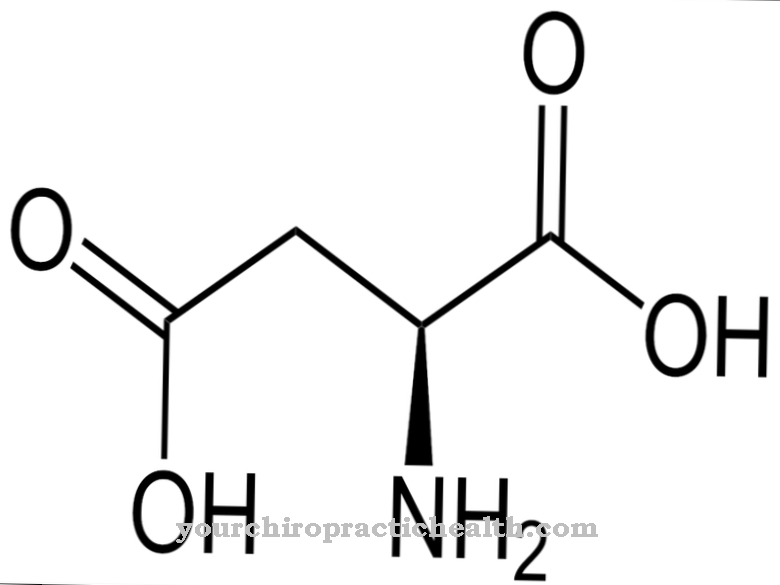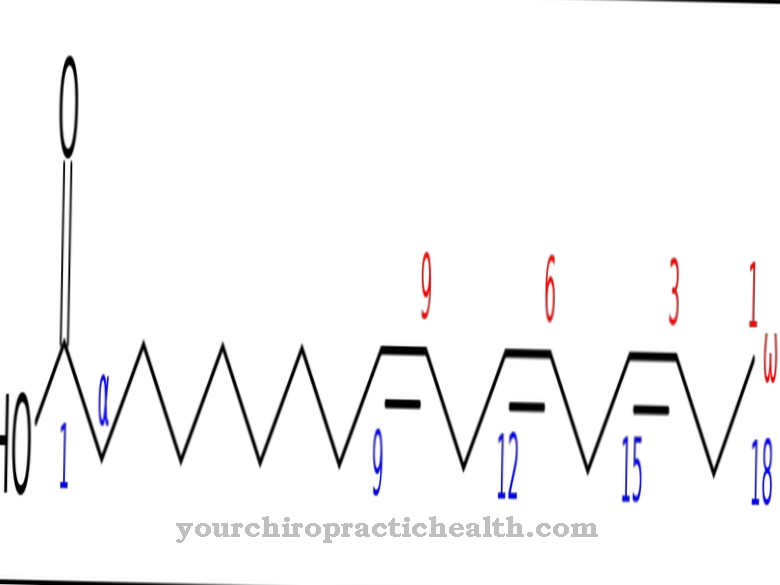γ-aminobutyric acid, also known as GABA (gamma-aminobutyric acid) is a biogenic amine of glutamic acid. GABA is also the most important inhibitory neurotransmitter in the central nervous system (CNS).
What is γ-aminobutyric acid?
Γ-aminobutyric acid is a derivative of glutamic acid and an amine of butyric acid. Amines are organic derivatives of ammonia in which one or more hydrogen atoms have been replaced by alkyl groups or by aryl groups.
From a chemical point of view, γ-aminobutyric acid is a non-proteinogenic amino acid. Non-proteinogenic amino acids are amino acids that are not incorporated into proteins during translation. They act as amino acid antagonists in the body's enzyme metabolism. The γ-aminobutyric acid differs from the other proteinogenic α-amino acids in the position of the amino group. The GABA is an amino acid of the γ group because its amino group is on the third carbon atom after the carboxyl carbon atom. GABA binds to specific receptors in the body. It acts in the body as an inhibitory neurotransmitter.
Function, effect & tasks
GABA works on various receptors in the body. GABAa receptors are ligand-gated chloride ion channels. When GABA binds to the receptor, chloride flows in. This has an inhibitory effect on the affected nerve cell.
GABAa receptors are widespread in the brain. They play an important role in the balance between attenuation and arousal in the central nervous system. Various drugs that have a depressant effect attack the GABAa receptor. These active ingredients include benzodiazepines, anti-epileptics, propofol, and barbiturates.
GABAa-ρ-receptors have a similar effect as GABAa-receptors. However, they cannot be influenced by the active substances mentioned above. GABAb receptors are so-called G-protein-coupled receptors. When γ-aminobutyric acid binds to these receptors, more potassium flows into the nerve cells. At the same time, there is a reduced outflow of calcium. This creates a presynaptic hyperpolarization and an inhibition of the transmitter release. In contrast, behind the synaptic gap there is an increased influx of potassium. The result is an inhibitory postsynaptic potential (IPSP).
The muscle relaxant baclofen works precisely on this receptor. Generally speaking, GABA has an anxiolytic, analgesic, relaxing, anticonvulsant and blood pressure stabilizing effect. In addition, GABA has a sleep-promoting effect.
But GABA does not only act as an inhibitory neurotransmitter. GABA also inhibits hormone secretion in various endocrine glands. Γ-aminobutyric acid has a significant effect in the pancreas. There the acid inhibits the secretion of glucagon in the alpha cells of the islets of Langerhans. GABA also has a central effect on the hypothalamus and thus on the secretion of releasing hormones. GABAergic nerve cells also supply the pituitary gland, so that the pituitary production of prolactin, ACTH, TSH and LH is also influenced by GABA.
GABA also stimulates the HGH releasing hypothalamic hormone. In addition, γ-aminobutyric acid is said to have an immunomodulating effect. Via GABA receptors located on the T cells, γ-aminobutyric acid blocks the secretion of inflammatory cytokines and at the same time inhibits the activation and proliferation of T cells.
Education, occurrence, properties & optimal values
γ-aminobutyric acid is formed from glutamate. The enzyme glutamate decarboxylase (GAD) is required for this. Glutamate is the main excitatory neurotransmitter. With just a single step, the effect is almost reversed and an inhibitory neurotransmitter is created. Immediately after formation, part of the γ-aminobutyric acid is transported into the neighboring glial cells. There, GABA can be converted into succinate semialdehyde by GABA transaminase. It can thus be built into the citric acid cycle and broken down.
In the pancreas, GABA is produced in the insulin-forming beta cells of the islets of Langerhans. The enzyme GAD65 produces GABA from glutamate. On the one hand, it is secreted via SLMV. SLMV are synaptic-like microvesicles that resemble synaptic vesicles. A small part of GABA is secreted in the pancreas but also via LDCV, the so-called large dense core vesicles. These vesicles contain a typical complex of insulin and zinc. The respective vesicles have a GABA transporter. GABA secretion in the pancreas occurs every four hours. In addition, there is a vesicular secretion.
Diseases & Disorders
Low levels of γ-aminobutyric acid are regularly found in various diseases. These include, for example, chronic pain, high blood pressure, irritable colon, premenstrual syndrome (PMS), depression, schizophrenia and epilepsy. A deficiency in γ-aminobutyric acid can lead to night sweating, impulsiveness, anxiety and memory loss.
Impatience, fast heartbeat, ringing in the ears (tinnitus), cravings for sweets and muscle tension are symptoms of a GABA deficiency. A GABA deficit can be treated in different ways. So those affected can take the GABA precursor glutamine. It can also be used in combination with the small amino acid glycine. Oral administration of GABA mainly affects the periphery, i.e. the endocrine organs and tissues. A central effect cannot be achieved because the blood-brain barrier prevents the absorption of γ-aminobutyric acid.
However, γ-aminobutyric acid can also be overdosed. A combination with benzodiazepines, alcohol, antipsychotics, hypnotics, anesthetics, tricyclic antidepressants, opioids and muscle relaxants is particularly dangerous. They can increase the effects and side effects of γ-aminobutyric acid. An overdose of γ-aminobutyric acid can lead to dizziness and muscle weakness. Those affected suffer from somnolence and a slow heartbeat. You feel weak, have respiratory depression, have seizures, and have memory loss.
If γ-aminobutyric acid is combined with other substances with a central nervous effect, it can lead to life-threatening cardiac arrest. GABA also appears to play a role in the pathophysiology of diabetes mellitus. It is assumed that the increased glucagon formation in diabetics is caused by a GABA deficiency. In addition, the activity of the T lymphocytes seems to be reduced by GABA.
























.jpg)



